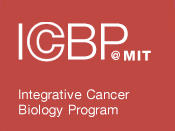| Title | Targeting H3K4 trimethylation in Huntington disease. |
| Publication Type | Journal Article |
| Year of Publication | 2013 |
| Authors | Vashishtha, M, Ng, CW, Yildirim, F, Gipson, TA, Kratter, IH, Bodai, L, Song, W, Lau, A, Labadorf, A, Vogel-Ciernia, A, Troncosco, J, Ross, CA, Bates, GP, Krainc, D, Sadri-Vakili, G, Finkbeiner, S, Marsh, JL, Housman, DE, Fraenkel, E, Thompson, LM |
| Journal | Proc Natl Acad Sci U S A |
| Volume | 110 |
| Issue | 32 |
| Pagination | E3027-36 |
| Date Published | 2013 Aug 6 |
| ISSN | 1091-6490 |
| Keywords | Animals, Animals, Genetically Modified, Blotting, Western, Brain, Brain-Derived Neurotrophic Factor, Cells, Cultured, Drosophila melanogaster, Female, Gene Expression Profiling, Histones, Humans, Huntington Disease, Lysine, Male, Methylation, Mice, Mice, Inbred C57BL, Mice, Inbred CBA, Nerve Tissue Proteins, Neurons, Oxidoreductases, N-Demethylating, Promoter Regions, Genetic, Reverse Transcriptase Polymerase Chain Reaction, RNA Interference |
| Abstract | Transcriptional dysregulation is an early feature of Huntington disease (HD). We observed gene-specific changes in histone H3 lysine 4 trimethylation (H3K4me3) at transcriptionally repressed promoters in R6/2 mouse and human HD brain. Genome-wide analysis showed a chromatin signature for this mark. Reducing the levels of the H3K4 demethylase SMCX/Jarid1c in primary neurons reversed down-regulation of key neuronal genes caused by mutant Huntingtin expression. Finally, reduction of SMCX/Jarid1c in primary neurons from BACHD mice or the single Jarid1 in a Drosophila HD model was protective. Therefore, targeting this epigenetic signature may be an effective strategy to ameliorate the consequences of HD. |
| DOI | 10.1073/pnas.1311323110 |
| Alternate Journal | Proc. Natl. Acad. Sci. U.S.A. |
| PubMed ID | 23872847 |
| PubMed Central ID | PMC3740882 |
| Grant List | 1F31 NS077543 / NS / NINDS NIH HHS / United States 2R01 NS45491 / NS / NINDS NIH HHS / United States CA-62203 / CA / NCI NIH HHS / United States NS-45283 / NS / NINDS NIH HHS / United States NS-52789 / NS / NINDS NIH HHS / United States NS072793 / NS / NINDS NIH HHS / United States P30 CA062203 / CA / NCI NIH HHS / United States P30-CA14051 / CA / NCI NIH HHS / United States P30-ES002109 / ES / NIEHS NIH HHS / United States PN2EY016525 / EY / NEI NIH HHS / United States R01 GM089903 / GM / NIGMS NIH HHS / United States U54 CA112967 / CA / NCI NIH HHS / United States |
